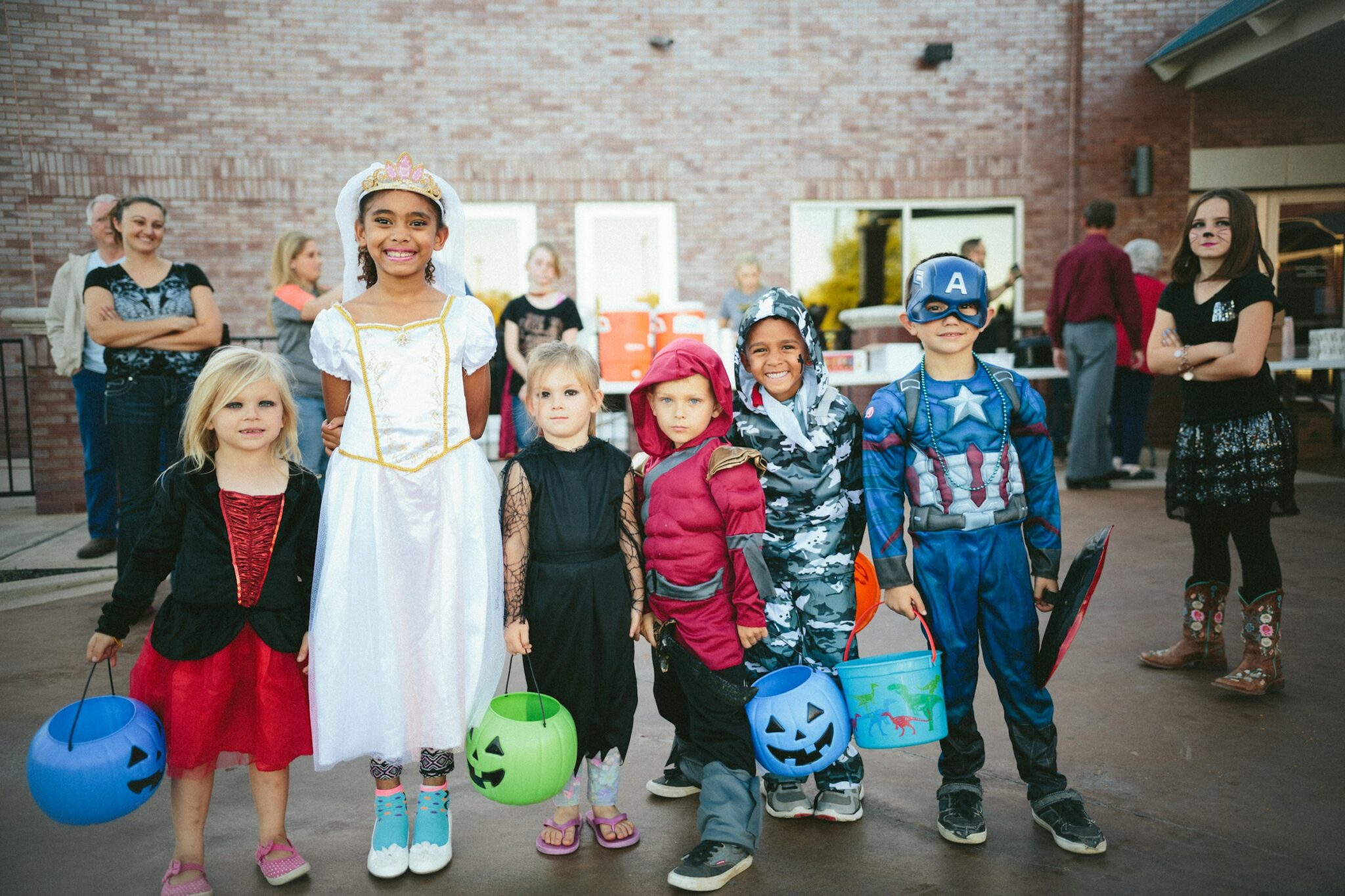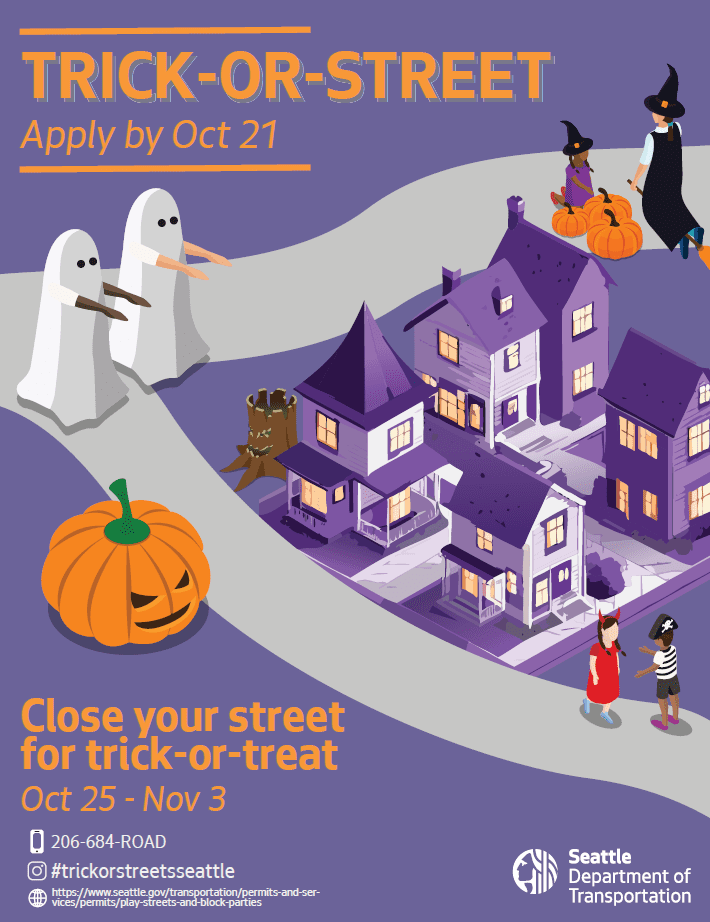
Blog stats: 800 words | 4-minute read
At-a-glance:
- A Trick-or-Streets event is a wonderful way to celebrate Halloween or Día de Muertos with your neighbors.
- You can apply to host an event on your block. Applications are due by October 21 and approved events can be hosted between October 25 and November 3.
- You’ll find helpful details below in this blog post. You can also visit our website to learn more or email us at SDOTpermits@seattle.gov for guidance.
- We hope you enjoy community building and fall festivities by participating this year!
Halloween is one of our favorite times of the year! It brings together families, friends, and neighbors through creative costumes, festive home décor, and impressive pumpkin carvings. In the spirit of Halloween, we’re providing a Trick-or-Streets promotion between October 25 and November 3. During this time, you can close your street for Halloween or Día de Muertos, free of charge, as long as your event is open to the public.
Here’s how it works
This year, we’ve expanded the fun by allowing multi-block street closures of up to three blocks in a row. This is perfect for neighborhood walks in costumes, scavenger hunts, and other activities. We encourage multi-block closures only where the cross streets are residential streets (with no yellow or white lines). Cross streets must remain open to allow cars to pass through.
Street closures can last until 10 PM. If your event goes beyond dusk, put reflective tape on your street closure signs and barricades to make sure they’re visible at night. Be sure to communicate with your neighbors before your planned event so they know the street closure is happening. We also encourage having someone monitor the end of each block.
If you’re considering applying for a Trick-or-Street closure, please include as many details as you can about your planned event. You can visit our website for more information about how to close your street. You can reach us at SDOTpermits@seattle.gov if you’d like additional guidance.
Play Street and Street Closed signs can be picked up from the Seattle Municipal Tower (700 5th Ave in Downtown Seattle) free of change. You can email publicspace@seattle.gov to inquire about availability.
Ready to apply?
If you want to apply, here’s how. Please remember to submit your application by October 21. We also encourage you to submit your application earlier so we can process and approve your permit earlier.
- If you are comfortable doing so, use the Seattle Services Portal to apply for your permit.
- In the “Project Name” field, please enter “Trick or Street” or “Day of the Dead” so we’re able to prioritize your application’s review.
- You can also use this simple registration form to sign up to participate or call (206) 684-7623 for help signing up.
- Interpreters are available to assist you for free.
- If you live on a Healthy Street, hosting an event is even easier.
- Because your street already has barricades and “STREET CLOSED” signs, you do not need any additional permits to hold a Trick or Street on an existing Healthy Street.
- You’ll still need to follow the guidelines, and you can print out extra signs to let people driving know about your planned activity.

More celebrations taking place in Seattle
The Día de Muertos Festival Seattle will take place on October 26-27, from 11 AM – 6 PM at the Armory Food & Event Hall and Fisher Pavilion. The festival is part of the Seattle Center Festál series. It is free and open to the public. For more information, visit the Día de Muertos Festival Seattle website.
The difference between Halloween and Día de Muertos
Hola, everyone! Día de Muertos originated in ancient Mesoamerica (Mexico and northern Central America) where indigenous groups, including Aztec, Maya, and Toltec, had specific times when they commemorated their loved ones who had passed away. Certain months were dedicated to remembering the departed, based on whether the deceased was an adult or a child.
After the arrival of the Spanish, this ritual of commemorating the dead was intertwined with two Catholic Spanish holidays: All Saints Day (Nov. 1) and All Soul’s Day (Nov. 2).
Día de Muertos is often celebrated on Nov. 1 as a day to remember children who have passed away, and on Nov. 2 to honor adults.
Today, Día de Muertos is celebrated mostly in Mexico and some parts of Central and South America. Recently, it has become increasingly popular among Latino communities abroad, including in the United States.
Día de Muertos is not a day for mourning. Families celebrate by placing an offering with food, fruit, and other items the departed liked when they were alive. Also, music and colorful ornaments placed around the offering welcome the spirit of the deceased.